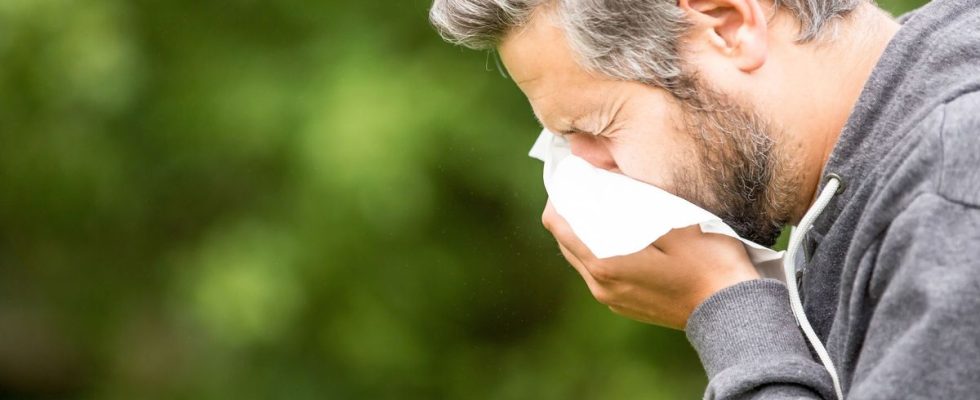Every year, when spring arrives, one in three French people sneezes, has a runny nose and itchy throat. In the future, these people allergic to pollen will be more and more numerous, and their symptoms more disabling. Several studies show that global warming increases the risk of allergy. In question, more particularly: the rise in temperatures and the increase in the concentration of carbon dioxide (CO2), greenhouse gases whose global emissions have exploded because of human activities. More allergenic pollens, more frequent allergies and longer pollen season: 20 minutes takes stock of this unattractive picture.
More pollen
“When we have an atmosphere enriched in carbon dioxide, plants will grow stronger and emit more pollen,” explains Samuel Monnier, engineer and spokesperson for the National Aerobiological Surveillance Network (RNSA). Global warming and the increase in carbon dioxide concentrations will therefore contribute to increasing the number of pollens in the air. “It’s most noticeable for trees that flower in late winter and early spring, like birches. »
A study conducted by the RNSA and the National Observatory on the Effects of Global Warming (Onerc) shows that in thirty years, the quantity of birch pollen emitted into the air has increased by 20% in France. An increase that is all the more problematic as birch pollen is particularly allergenic.
More allergenic pollens
Other scientific studies show that the increase in carbon dioxide concentration makes pollens more allergenic. “We compared the same quantity of pollen with a different atmospheric CO2 concentration. And we realized that the quantity of allergens was correlated with the concentration of carbon dioxide,” adds Isabella Annesi-Maesano, research director at Inserm and professor of environmental epidemiology. These pollens will therefore bother allergy sufferers more, making their symptoms more severe. Men and women with difficulty breathing, for example, are increasing in number.
Symptoms worsened by pollution
Urban pollution exacerbates symptoms in people allergic to pollen, who are more bothered during pollution peaks. “To simplify, pollution damages the outer envelope of pollen, bringing out finer particles, summarizes the professor of environmental epidemiology. While the pollen stopped at the level of the nose, now the particles will be inhaled and move to the bottom of the bronchi. »
But pollutants do not just weaken the respiratory tract. They will also “attack the grain of pollen which will weaken and break more easily”, according to Samuel Monnier. The plant will therefore release more allergenic proteins.
Longer pollen seasons
The allergy season is relatively stable at the moment, starting with the arrival of spring and ending in autumn. But due to rising temperatures, some species are now flowering earlier. “This year, the hazel tree flowered from the end of December because we had very favorable weather conditions for early flowering”, illustrates for example the engineer. People with allergies will therefore now be bothered by their symptoms over a longer period, from February to October.
New allergenic plants appearing
Rising temperatures have other consequences. Due to the heat, some species move to altitude. “This is particularly the case of ambrosia, an invasive exotic species that comes from North America and has very allergenic pollen,” explains Samuel Monnier. For the moment very little visible at altitude, this plant has been spotted up to 1,000 meters in the Alps. “The holm oak too, for example. It was mainly present in the Mediterranean and is now found in the north of the country, gaining ground. »

